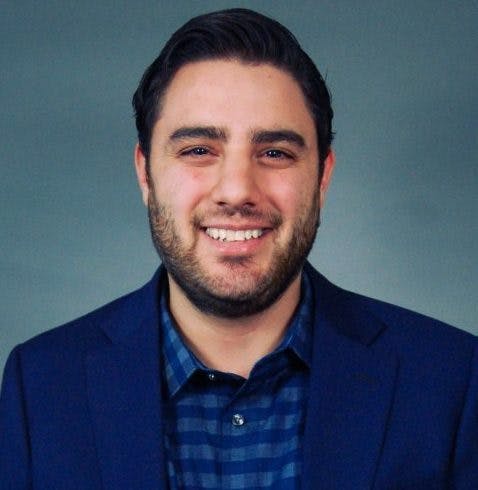
2025-06-10T13:54:10
Understanding Skin Grafts
- Dermatology
- Family Medicine
- Internal Medicine
- Orthopedics
![]() Medically reviewed by Allan Pauole CMHC.
Medically reviewed by Allan Pauole CMHC.
May 18, 2023 | Behavioral Health • Family Medicine
Specialties:Behavioral Health • Family Medicine

Primary care is often associated with the treatment of physical ailments such as the flu, sinus pain, kidney stones, etc., but up to 70% of primary care visits also include a behavioral health component according to Health Affairs. This is especially true for patients struggling with conditions like obesity, substance abuse, and chronic disease.
While most primary care providers (PCPs) offer basic mental health support and prescribe medications, they often need to refer their patients to outside professionals who are trained to handle more complex mental health issues.
This referral process is where care can become disjointed—PCPs and mental health professionals can struggle to coordinate care effectively, resulting in poor outcomes and follow-up care for patients.
Read on to learn how Revere Health Family Medicine in Provo addressed this problem by proactively integrating behavioral health with their primary care team.
Around 2017, Clinical Mental Health Counselor Allan Pauole joined Revere Health under an experimental model. He set up his practice directly in the same building as the PCPs and was available for immediate referrals and consultation when mental health issues came up.
This approach dramatically improved the collaboration and communication between the two specialties. By simply walking a few feet down the hall, PCPs had access to an experienced therapist who could answer questions, provide perspective, and discuss treatment options for patients with behavioral health needs. Soon, Pauole became a permanent fixture of the primary care team, just like a nursing assistant or advanced care clinician.
This holistic model has been great for continuity of care, especially because we know how closely the mind and body are tied together, Pauole said.
Rather than referring to an outside mental health professional and being “blind” to the care or follow-up process, PCPs could now refer to someone in-house with intimate knowledge of the patient’s situation.
The coordination also works both ways. Pauole said he often consults with PCPs and “bounces ideas” off them when he has a client who may be suffering from a physical condition like a UTI or low blood glucose which may be causing mental health issues.
“So much of the emotional trauma we experience has a physical component to it and vice versa,” Pauole said. “There is so much research that supports addressing these two issues simultaneously.”
Demand for behavioral health services has skyrocketed in recent years as individuals continue to grapple with feelings of isolation and loneliness exacerbated by the COVID-19 pandemic. Pauole cited one study done by BYU and other universities which found that loneliness is almost as detrimental as smoking in terms of lowering life expectancy.
This has put a strain on behavioral health resources and resulted in many mental health professionals being backlogged with long wait times before they can see referrals.
At Revere Health Provo Family Medicine, patients can be seen for mental health issues much more quickly and efficiently because scheduling and treatment goals are highly aligned. Instead of waiting weeks or longer to see someone, patients can be seen by a mental health professional in a matter of days, or sometimes even sooner, depending on the situation.
Along those lines, Pauole is available for emergency situations and can see patients who have more immediate mental health needs such as suicidal thoughts or acute depression. Urgent Care is also located in the same building, which allows him to prioritize his workload and adjust his schedule as necessary to help patients who need it the most at any given time.
The integration of Behavioral Health and Primary Care also makes patients feel more comfortable throughout the process. Instead of conspicuously waiting in a therapist’s office or lobby, patients can wait in a traditional doctor’s office setting, which helps them avoid feelings of anxiety or shame.
Integration takes away some of the stigma because when you come into the Family Medicine clinic, no one else in the waiting room knows anything about why you are there, Pauole said.
In summary, by working together, primary care and behavioral health professionals can align treatment goals, monitor patient progress, and provide timely interventions when needed. This collaborative effort reduces fragmented care and enhances overall treatment effectiveness.
Visit Revere Health Behavioral Health for more information and to view a list of behavioral health clinics.

WRITTEN BY:
Tom Betar
Tom Betar currently serves as Revere Health’s Communications Manager. Tom earned his bachelor’s degree in Communications from the University of Utah where he studied print journalism and marketing. Tom focuses on producing written content in a variety of formats and developing strategy for both internal and external communications at Revere Health. His professional work experience includes email marketing, social media management, news writing/reporting, and content creation. Outside of work, Tom enjoys traveling to his hometown of St. George as well as playing basketball and going to concerts/plays with his wife.

2025-06-10T13:54:10

2025-04-24T14:00:43

2025-03-10T14:24:39

2025-01-21T10:28:42
This information is not intended to replace the advice of a medical professional. You should always consult your doctor before making decisions about your health.